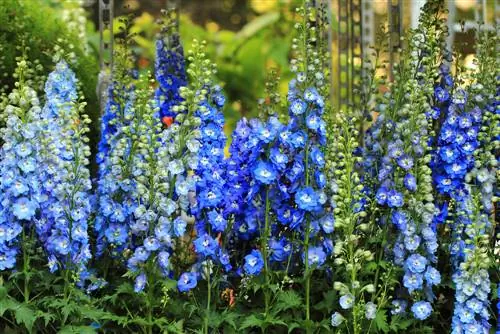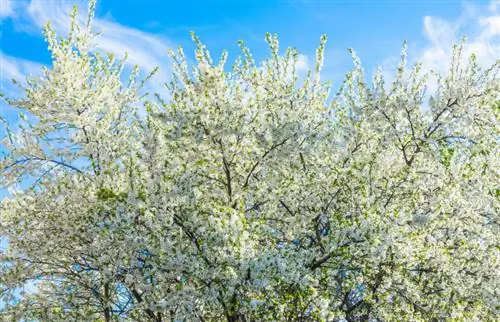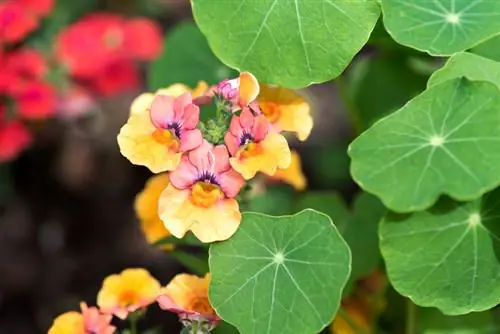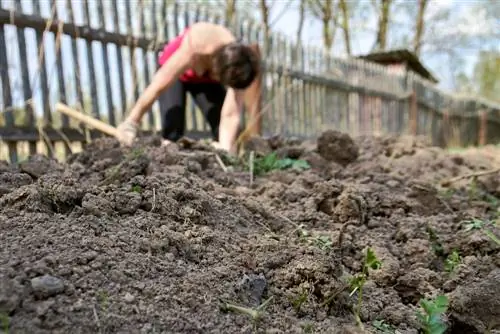- Author admin [email protected].
- Public 2024-01-02 03:03.
- Last modified 2025-01-23 11:21.
Even though perennials have relatively low nutrient requirements compared to vegetables, they should still be provided with fertilizer at least once a year. Below you will find out when the best time is and what you should fertilize your perennial bed with.
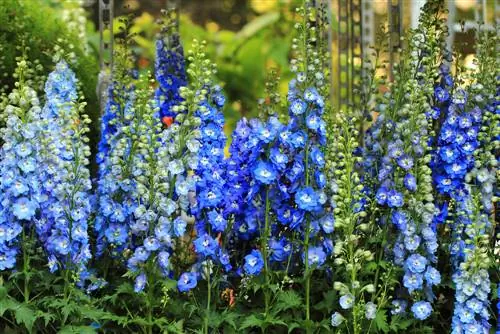
How and when should you fertilize a perennial bed?
In order to optimally fertilize a perennial bed, you should incorporate compost or horn shavings before planting, apply compost or horn shavings again in spring (March) and in the summer heavy feeders such as asters, phlox, sun bride or daylilies with mineral fertilizer or an alternative natural fertilizer Supply fertilizer.
Fertilize the perennial bed before planting
If you are freshly creating a perennial bed, this is the ideal time to fertilize the soil and thus create optimal conditions for the growth of the perennials. To do this, enrich the soil with fresh compost or horn shavings. One to two handfuls of horn shavings should be mixed into the soil per square meter. If you choose compost, it is applied to the soil in a five to eight centimeter thick layer.
Fertilize the perennial bed in spring
In order to provide the perennials with enough nutrients for their growth, it is advisable to fertilize the perennial bed in March at the start of growth. The best way to do this is to use a natural fertilizer such as compost (€12.00 on Amazon) or horn shavings, which gradually decompose and thus supply the perennials with nutrients over a longer period of time. Mineral fertilizers are not recommended in spring as they act quickly and, above all, stimulate growth, which can cause the plants to grow too quickly and become unstable.
Fertilize the perennial bed step by step
You need around 3 liters of compost per square meter for your perennials. You will also need a hoe and a watering can or a hose.
- Carefully loosen the soil on the perennial bed. But be careful not to damage the roots.
- Spread the compost over the herbaceous bed, especially around the perennials.
- Mix it a little with the soil by carefully loosening the soil and compost with the hoe again.
- Water your fertilized perennial bed well.
Heavy feeders also fertilize in summer
There are also heavy feeders among perennials - and these need an additional portion of fertilizer in the summer for abundant flowering. The heavy feeders among perennials include most cottage garden perennials such as:
- Asters
- Chrysanthemums
- Monkshood
- Dahlias
- Lilies
- Phlox
- larkspur
- Rudbeckia
- Suneye
- Sunflowers
- Sun Bride
- Hollyhocks
- Daylilies
These perennials should receive some mineral fertilizer in early summer. Blue grain, for example, is suitable for this. If you prefer it natural and homemade, you can also fertilize with compost, coffee grounds or homemade nettle manure.

